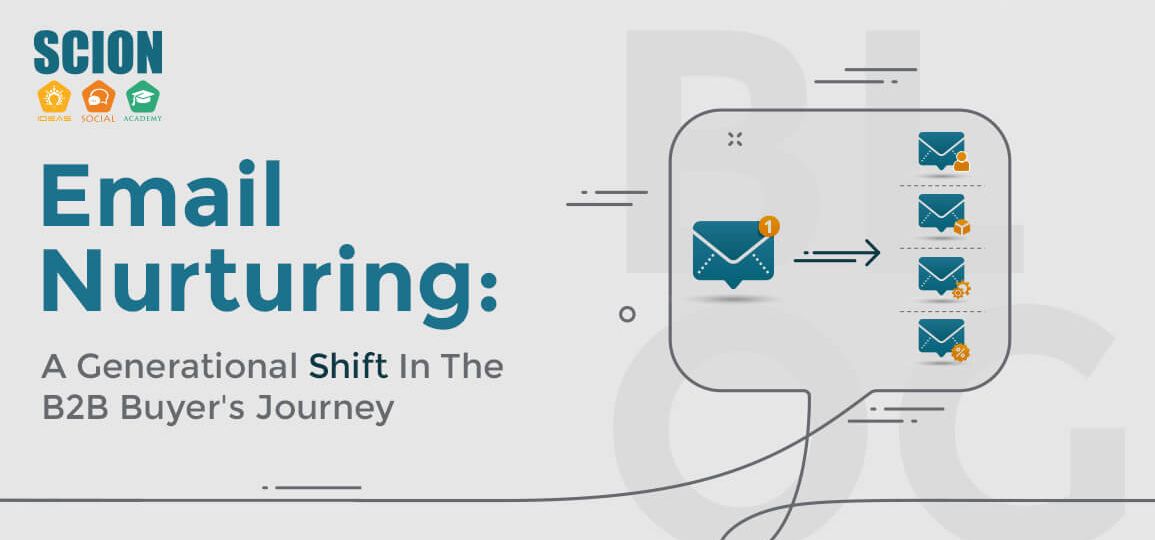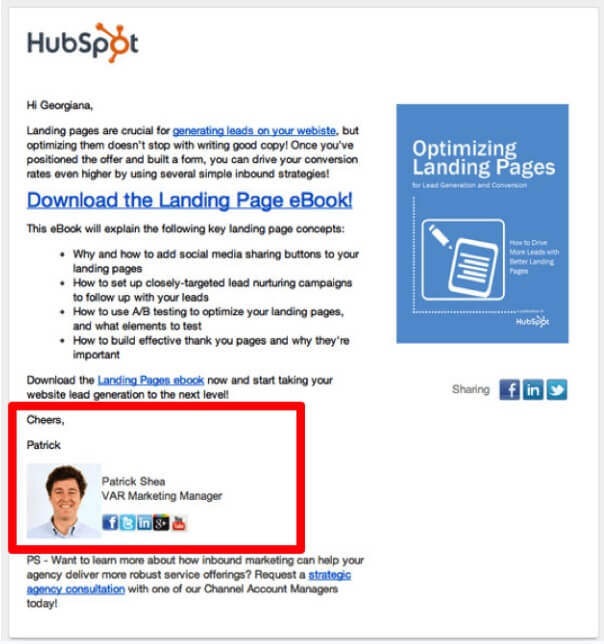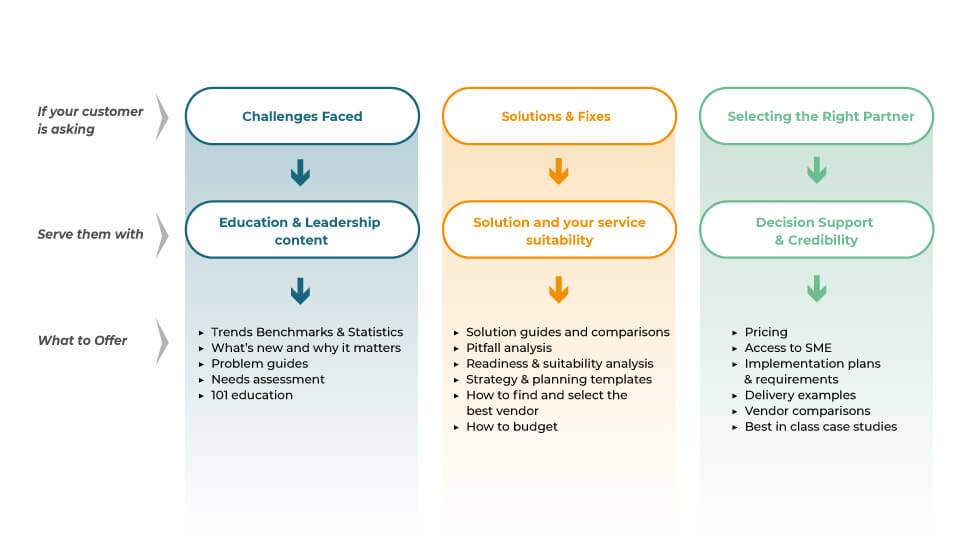
Email nurturing helps prospects along the buying cycle, strengthens relationships with your brand, and improves conversion rates. Lead nurturing is an essential element of B2B email marketing, though it calls for a little more nuanced approach than B2C.
The current generation of the workforce is primarily made of tech-savvy millennials who are comfortable doing their own research and tend to enter the buying process at a much later stage.
Lead conversion typically happens by drip-feeding content, requesting a free trial or demo, buying products, or speaking to a sales representative. This flow has now become somewhat disrupted.
Although some people may still prefer to talk to a salesperson directly, nurtured leads are much more likely to become customers, especially with the current generation. They prefer to receive more information about products and engage with brands across various platforms.
So it’s time to learn how to use email nurturing to attract these B2B buyers. And remember: the more you nurture prospects, the better. Email is not dead yet! In fact, according to surveys, email nurturing campaigns lead to 4 to 10 more responses when compared to standalone email blasts.
How do we know? We know because with mobile devices the buyer behavior has changed. According to an analysis by Return Path, 55% of email opens are done using mobile devices. In fact, users prefer email notifications over push notifications or in-app notifications. Users today are also more receptive to receiving from companies.
How to Build an Effective Email Nurturing Process
When creating effective emails for lead nurturing, you must consider a few essential things.
- Who are your customers?
- What is their profile?
- Where do they live?
- What are their interests?
- How frequently are you going to send the emails?
- Is your process automated?
- Is your drip campaign ready?
- How deep is your nurturing process?
- Is the buying process defined?
- What happens when a lead enters the sales funnel?
- Can you map their journey through the funnel?
- Are you able to customize the content as per the funnel stage?
Clearly, emails must be personal and tailored to personas. You can organize them based on list segmentation and the content tailored to specific stages of the buyer’s journey.
A buyer’s journey is determined by their persona. In B2B sales, this is even more important as contrary to B2C, the B2B sales process has often more than one person involved. Therefore, building personas becomes even more important.
You would need to gather information about your customers to build the right personas. Give them a name, title, picture, personality traits, passion, drives, goals, challenges, and anything else that will make them a fully-rounded person.
A/B testing is essential, and you must do it with each email before sending it to your list.
While conducting A/B testing, you can play around with the following elements to see what works better:
- Subject line: This is the most important part of the email. You have limited words to make an impact and only a few seconds to grab enough attention that the user would want to click on it.
- Email length: The most effective length of a B2B email is between 50 and 125 words, such an email gets a 50% response rate. Brevity is a good choice because business leaders are busy and like short emails.
- Email content: Keep the content interesting and to the point. Use links and attach information about your offering in a “feel-good” format to help the person connect to your brand.
- Use the right design elements: Keep the design concurrent with your brand image. Use the right colors and content placement to deliver your message quickly and effectively.
- Use clearly labeled buttons: If you want the user to click on a button, make it prominent, label it clearly, and hyperlink it correctly. Nothing irritates savvy buyers more than landing on the wrong pages and having to search around for the promised content!
- Have a compelling CTA: Now this one is a no-brainer. Make the call-to-action compelling and interesting enough that buyers are willing to follow the outcome.
We will now dive deeper into various aspects of email nurturing for B2B buyers.
Create a Sales Funnel
When using B2B email marketing, you want to create the sales funnel to guide your prospects through the different stages of the buying process.
The first step is identifying which prospects are ready to buy. Once you’ve identified them, you can start sending them relevant emails to make them aware of your products and services.
Once they know your offerings, you should nurture them with content marketing to improve their understanding of your products or services.
Using drip campaigns to create an effective sales funnel is an excellent method for reaching customers. Moreover, these campaigns allow you to understand what your customers want and address them directly.
The content and approach of each subsequent email will depend on where the buyer is in the sales funnel. A buyer who has entered the funnel must be fed TOFU or Top of the Funnel content that is more generic and focuses more on awareness. Give links and your brand’s social media handles to promote engagement.
The second stage will be MOFU or middle of the funnel content where you explain more about your offering and try to engage the buyer. Here you can add additional content that supports your claims like a white paper.
The final stage is BOFU where it’s to show your cards and let the buyer know the advantages of your offering. Show them what they will get and write a CTA to directly take them to the outcome page. Keep it short and simple!
This flow can simplify the buying process and help you measure performance. With the help of a sales funnel, you can easily measure and monitor your customers’ behavior. After all, you want your email marketing campaigns to generate revenue and profit.
Segment Your Leads
When you segment your leads as per interest, behavior, and demography, you can tailor your content for the buyer. You can add content like a case study or a white paper. It will improve your sales and email marketing results, by increasing your conversion rates.
By understanding their current level of engagement and where they are in their buyer journey, you can send them emails that are more relevant to them.
Schedule your email delivery at times that they are more likely to open the email, and your campaign success rate goes up significantly.
Below are some examples of ways to segment your leads:
- Understand your list’s demographics.
- Know what type of product your audience uses.
- Depending on your industry, you can segment your list by age, gender, or job function.
- Personalize your messages to those who have an interest in your offerings.
Create a Compelling Call to Action
Create a compelling call-to-action (or CTA) for your email marketing campaign. It will help convert prospects into customers. This little button holds a lot of power. Yet, one of the hardest things for marketers is getting it right. Keep it under seven words and clearly state the benefit your visitor can gain from completing the action.
Make your CTA copy as strong as possible by focusing on your target audience and using solid visuals.
Here are a couple of examples of emails with clear CTAs but different approaches in copy and design.
Use personalization in the subject line, main body, or preview. This is vital for your B2B email marketing and research shows personalization works better than going generic.
Think beyond simply counting the lead’s first name to the email greeting.
Consider segmenting leads according to their needs and behavior. We have discussed this point above.
Monitor Your Campaigns
Lead nurturing campaigns are meant to address the needs of those who aren’t yet ready to make a purchase. These buyers are typically troubled by a particular problem and have opted-in to receive relevant content.
You can monitor your lead nurturing campaigns by identifying your subscribers’ behavior. For example, you know that your potential buyers prefer to move ahead on the journey on their own without actively interacting with a salesperson.
You must ensure that all customer care channels like live chat and calculators are active. Allow the buyers to make the sale “on their terms” without needing to talk to a rep. Make all the information available, and be ready to help in any way possible.
Basically, give this generation’s B2B buyers the B2C experience. They are used to it, and they expect it.
They can then target them with emails that provide information relevant to their specific problems. This targeting will help you to improve your campaign.
Things to Take Care of While Running a B2B Email Nurturing Campaign
The main problem with B2B campaigns is the conversion rate. Since business leaders are busier, it takes a little extra effort to catch their attention.
Mentioned below are a few tips to improve your email nurturing campaign:
Create Lead Magnets
Though it is important to keep in mind that lead magnets aren’t just for freebies – they should be a product in and of themselves!
A great way to create an effective lead magnet is to create a free eBook or a PDF checklist, which are highly actionable documents aimed at your targeted audience. You can use Google Docs or other written resources to create your lead magnet and then add a header. This will give your lead magnet a more professional look and feel.
Check Out Our Free Cheat Sheet to Creating Lead Magnets for B2B Email Nurturing
Once a lead has subscribed to your newsletter, you should follow up with additional resources and webinars.
Remember to track the conversion path between lead magnet opt-ins and email nurturing, so you can make any necessary optimization.
Keep in mind that lead magnets may need to be updated every six to twelve months, depending on your goals. If you want to see an increase in conversions, update your lead magnets as often as possible.
Use a lead magnet that speaks directly to the prospect’s needs. For example, if your lead has downloaded a white paper on data backup software, your first nurturing email could be on the topic of how important it is to backup your data.
Automate Your Nurture Sequences
Automation is the key to maximizing your email marketing. This type of email marketing keeps your business in the mind of prospective clients and customers while not attempting to push your products.
In fact, according to research, 63% of website visitors aren’t ready to make a purchase until 3 months after they visit your site. Automated email nurture sequences are a great way to get these people to become leads and eventually turn into customers. As per research, businesses that use marketing automation processes see a massive 451% growth in qualified leads.
Before implementing automation into your email marketing campaign, you should create a test sequence. First, determine your opt-in form on your website. You can use this to determine the best timing for your nurture sequence. It should not be more than three to four days apart.
Depending on your audience, you can even send your nurture sequence every month. It is important to keep in mind that the length of your nurture sequence depends on the behavior of your audience, so space them out to avoid them forgetting about your emails.
Create Personalized Offers
Personalization is a key element of nurturing strategies. Personalize offers for each prospect. Offer personalized offers at the stages of the buying process. These messages can encourage inbound calls and immediate conversations with sales representatives.
You can also include exclusive offers. Irresistible deals are a great way to encourage conversions.
Make your content educational and relevant to what the lead is trying to do. Don’t push them to opt-out, but rather help them solve a problem. Once you have gained their trust, you can sell them a product or service.
Summing Up: Building Trust with Customers
Email nurturing is an effective method for establishing long-term relationships with potential customers. When done correctly, email nurturing can be used to generate an exponential ROI.
It requires that you send relevant and valuable content that delivers value to leads. You can send a series of nurturing emails to each of your leads. Regardless of whether they are ready to buy or not, these emails should be valuable to them.
As you master these tips, you’ll be on your way to increased conversion rates.


